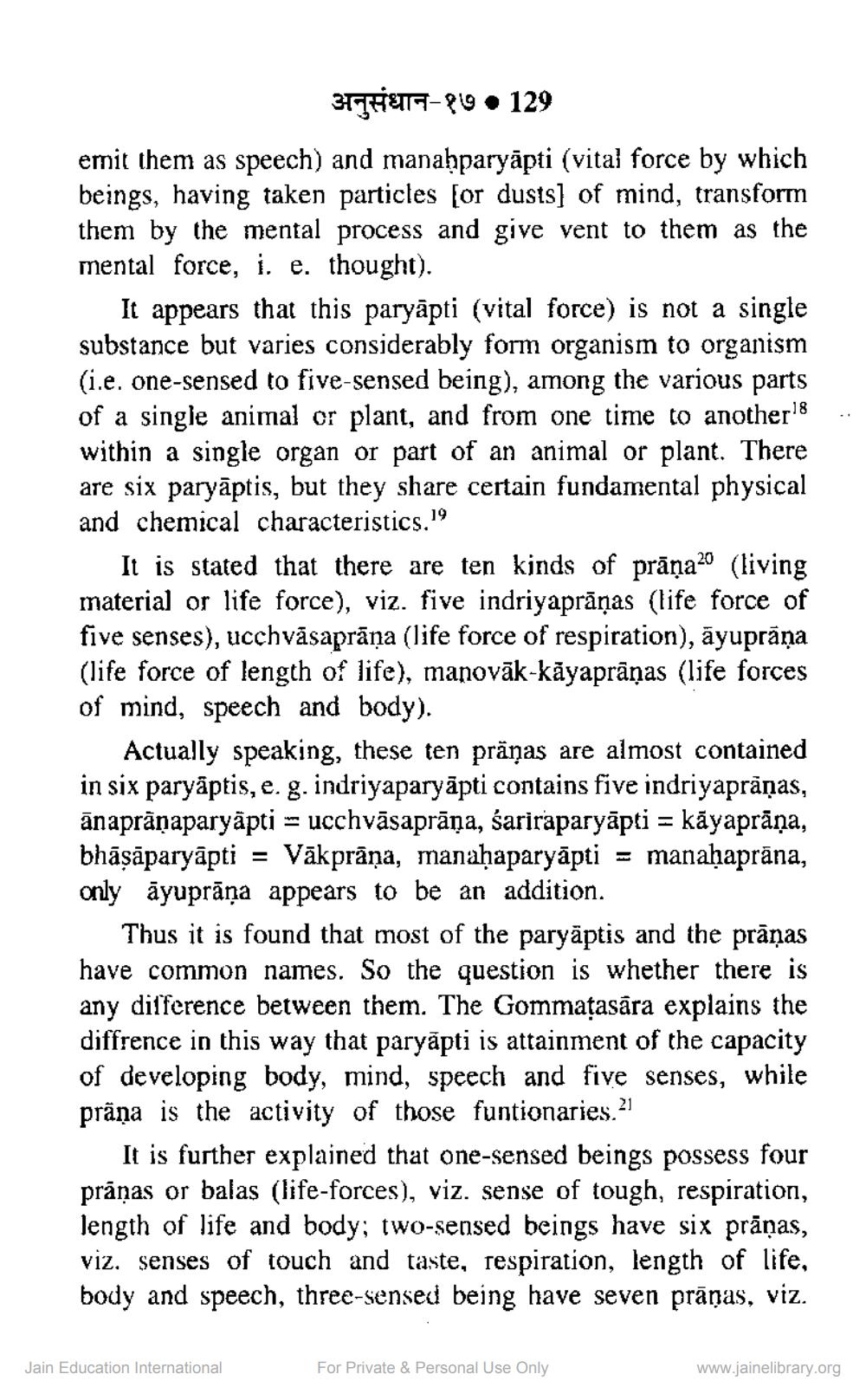________________
3GHT-24 • 129
emit them as speech) and manahnaryāpti (vital force by which beings, having taken particles for dusts] of mind, transform them by the mental process and give vent to them as the mental force, i. e. thought).
It appears that this paryāpti (vital force) is not a single substance but varies considerably form organism to organism (i.e. one-sensed to five-sensed being), among the various parts of a single animal or plant, and from one time to another 18 within a single organ or part of an animal or plant. There are six paryāptis, but they share certain fundamental physical and chemical characteristics."
It is stated that there are ten kinds of prāņa20 (living material or life force), viz. five indriyaprāņas (life force of five senses), ucсhvāsaprāņa (life force of respiration), āyuprāņa (life force of length of life), manovāk-kāyaprānas (life forces of mind, speech and body).
Actually speaking, these ten präņas are almost contained in six paryāptis, e. g. indriyaparyāpti contains five indriyaprāņas, ānaprānaparyāpti - ucсhvāsaprāņa, sariraparyāpti = kāyaprāna, bhāṣāparyāpti = Vākprāņa, manaḥaparyāpti = manahaprāna, onlyāyuprāņa appears to be an addition.
Thus it is found that most of the paryāptis and the prāņas have common names. So the question is whether there is any difference between them. The Gommațasāra explains the diffrence in this way that paryāpti is attainment of the capacity of developing body, mind, speech and five senses, while prāņa is the activity of those funtionaries.21
It is further explained that one-sensed beings possess four prānas or balas (life-forces), viz. sense of tough, respiration, length of life and body; two-sensed beings have six prānas, viz. Senses of touch and taste, respiration, length of life, body and speech, three-sensed being have seven prānas, viz.
Jain Education International
For Private & Personal Use Only
www.jainelibrary.org




